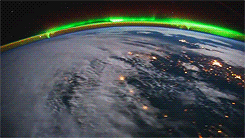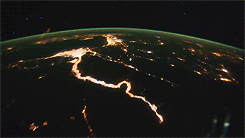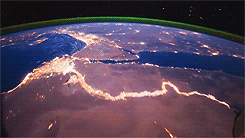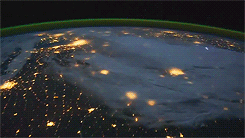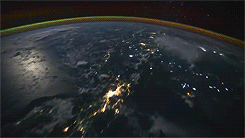So I Recently Got Ebooks Of The New Revised Versions Of The Young Wizards Series By Diane Duane Because

So I recently got ebooks of the new revised versions of the Young Wizards series by Diane Duane because I loved the originals so much growing up and I wanted to reread them and see the changes (especially A Wizard Alone) and I was terribly unhappy to discover that the revised editions aren’t available in print in the US probably won’t be for years. But I’ve always wanted to learn book binding, so I’m just going to print out the ebook and attempt to make my own print copy. To that end I spent all day today rapturously fantasizing about end papers and book jackets. This started as an attempt at designing my own endpapers, but it may be a bit much for that actually…
More Posts from Outofambit and Others

One of Fred’s shyer relatives breaks cover…
(via Black Hole Discovered Which Emits Brilliant Light)

why would someone think this is a good idea
As someone currently spite-writing the second draft of a project...this fills me with such a sense of purpose and inspiration. XD
What inspired you to write Young Wizards? A relative, a dream you had? Did the story come to you as you were writing it, or was it hammered from bits and pieces of thoughts made plain on text? Were there parts you struggled with, parts that came easier than others? (Have you already answered these questions in an interview you can link to?)
What inspired me to write So You Want To Be A Wizard?
Partly humor. Partly rage. (More about both under the cut...)
The subject's come up in interviews every now and then, but let's tl:dr; it here.
The humor: Often enough while I was nursing, and seeing the bizarre things people would do to their own bodies, I wished out loud to other fellow professionals that human beings came with some kind of instruction manual. Now, I'd known the "So You Want To Be A…" series of (US-published) career books from my childhood. One day when I was thinking about them—and for no reason I can understand at this end of time—the word "…Wizard" plugged itself onto the end of the title template.
Instead of a simple instruction manual for people, I found myself considering what a wizard's manual would look like. Where would it come from? Who would it have come from? Might it, itself, be an entirely bigger manual than the one I'd been joking about—but the full instructions and background material you'd need for (maybe) understanding life, but (definitely) doing magic? A book as big or as small as you needed for the work in hand, and full of the answers to questions you never thought you'd get answers to? ...
From that basic concept, the wider concept of wizardly culture built itself up over the next couple of years. ...Naturally I'd read Le Guin's "Earthsea" books years before, and I'd noted (but decided to pass on) the concept of a school-for-wizards. While it was interesting enough, it'd already been done by a writer far more skilled. What interested me more was a DIY-ish approach, where you learn by yourself, do things that interest you, and join up with other like-minded practitioners when the mood moves you or circumstances require.
Anyway, now comes the rage. While all this was percolating in the background, I was finishing up a YA series by another writer. When I hit the end of it, I was profoundly upset by the events of the series’s closure. They seemed to me to have treated strong and resilient young characters as helpless creatures without agency, subjecting them “for their own good” to an amnesic end-state they absolutely didn’t deserve. I got mad about this. I dove into the writing of the first Young Wizards book with the intention of treating my young characters a whole lot better—since if there was anything I knew about kids from my nursing, it was that a lot of them were tougher than many of the adults around them.
Once I was started, the writing went straightforwardly from book’s beginning to book’s end (because as I was already a screenwriter, and screenwriters outline, the novel was naturally outlined too). The writing took about six months, as right then I was also writing for Scooby and Scrappy-Doo to pay the rent. I turned in the book and didn’t think much more about what might happen next (though I knew there was quite a lot more story to tell) until I ran into Madeleine L’Engle at some event of my publisher’s. She took me aside and said, “I read your last one. I liked it a lot! When’s the next?”
That was when I realized I had a problem... so I got busy. :) ...And I’ve been busy with the Young Wizards universe ever since. I’m busy with that universe right now, though it may not look like it. And I expect to be busy with it for years to come.
HTH!



Galactic Poetry
The downfall of living in an urban center, is that all we get to see during the night are blankets of cloud (possibly smog), and if we’re lucky, a few stars. What artist Sanjeev Sivarulrasa is trying to show in his work, Night Light, is what we are missing out on; a magical world, swimming through space, with galaxies and nebulae bejeweling the cosmos.
It is visual poetry.
The artist uses astrophotography to capture the various forms and colours of the stars and planets outside of an observatory setting. According to journalist Becky Rynor, it is as if he is capturing the great masterpieces that our ancestors would see; a natural art. Space does not have to be sacred scientific ground; it can also be merely another aesthetic aspect of our lives, that inspires people to think about the greater world around us. The simple observer plays as big of a role, as the great scientist. When this right to observe is taken away from us, via artificial city lights, we have to make the effort to go to the sources such as countryside’s, forests, lakes, and mountains. We must go to the nature, to connect back to ancient ideas of aesthetic beauty, and renew the senses. Sanjeev’s astrophotographs are to be seen as meditative, bringing awareness to our daily surroundings, and that sometimes, we need to take a step back, and see the bigger picture.
Night Light is currently exhibited at Karsh-Masson Gallery, until the 5th of May, 2013, and there will be an artist talk on the 24th of March, 2013 -Anna Paluch

“Every atom in your body came from a star that exploded. And, the atoms in your left hand probably came from a different star than your right hand. It really is the most poetic thing I know about physics: You are all stardust. You couldn’t be here if stars hadn’t exploded, because the elements - the carbon, nitrogen, oxygen, iron, all the things that matter for evolution and for life - weren’t created at the beginning of time. They were created in the nuclear furnaces of stars, and the only way for them to get into your body is if those stars were kind enough to explode. So, forget Jesus. The stars died so that you could be here today.”
Lawrence M. Krauss (via thorosofmyr)

SO YOU WANT TO BE A WIZARD HEARNSSEN PUBLISHED BY PHOENIX PRESS 793.4
[click for bigger]
Selections from Tallmadge Doyle’s ethereal Celestial Mapping Series
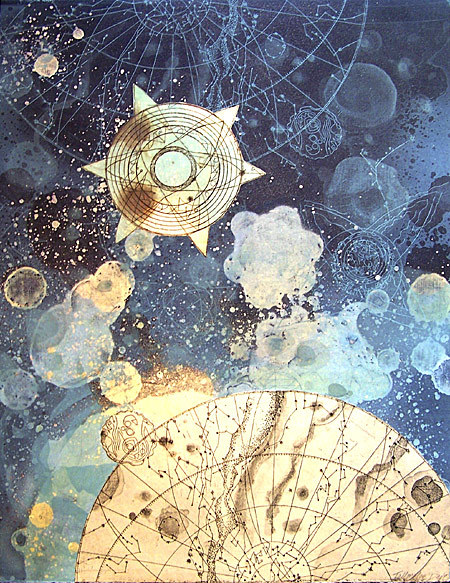
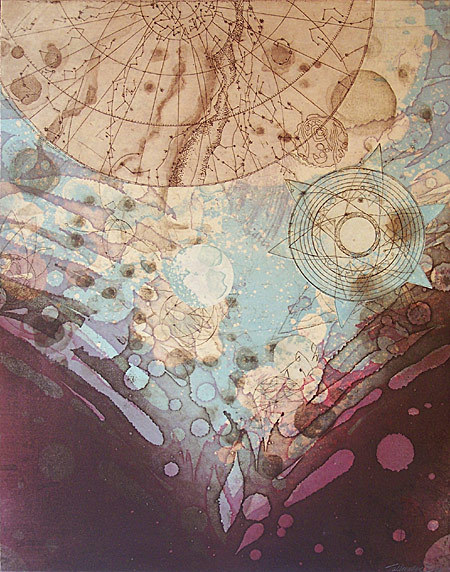





-
 luxuryoveralls reblogged this · 1 year ago
luxuryoveralls reblogged this · 1 year ago -
 amaranthbirate reblogged this · 1 year ago
amaranthbirate reblogged this · 1 year ago -
 somethingviolentandfierce liked this · 1 year ago
somethingviolentandfierce liked this · 1 year ago -
 folatefangirl reblogged this · 1 year ago
folatefangirl reblogged this · 1 year ago -
 folatefangirl liked this · 1 year ago
folatefangirl liked this · 1 year ago -
 stop-that-llama reblogged this · 1 year ago
stop-that-llama reblogged this · 1 year ago -
 displayheartcode reblogged this · 1 year ago
displayheartcode reblogged this · 1 year ago -
 goddessofliteratureandsarcasm liked this · 1 year ago
goddessofliteratureandsarcasm liked this · 1 year ago -
 flawsinthevoodoo liked this · 1 year ago
flawsinthevoodoo liked this · 1 year ago -
 vanillatumbleweedscoffee liked this · 1 year ago
vanillatumbleweedscoffee liked this · 1 year ago -
 prismaticbleed liked this · 1 year ago
prismaticbleed liked this · 1 year ago -
 winged reblogged this · 1 year ago
winged reblogged this · 1 year ago -
 ladyaster3 liked this · 2 years ago
ladyaster3 liked this · 2 years ago -
 greenygal reblogged this · 2 years ago
greenygal reblogged this · 2 years ago -
 faevalkyrie liked this · 2 years ago
faevalkyrie liked this · 2 years ago -
 spookylair liked this · 2 years ago
spookylair liked this · 2 years ago -
 separateentity reblogged this · 2 years ago
separateentity reblogged this · 2 years ago -
 blackacid liked this · 2 years ago
blackacid liked this · 2 years ago -
 shortforemily liked this · 2 years ago
shortforemily liked this · 2 years ago -
 yusukesmomjeans reblogged this · 2 years ago
yusukesmomjeans reblogged this · 2 years ago -
 vibesaresubjective reblogged this · 2 years ago
vibesaresubjective reblogged this · 2 years ago -
 vibesaresubjective liked this · 2 years ago
vibesaresubjective liked this · 2 years ago -
 alb-back liked this · 2 years ago
alb-back liked this · 2 years ago -
 aderynrrowntree reblogged this · 2 years ago
aderynrrowntree reblogged this · 2 years ago -
 imkerfuffled reblogged this · 2 years ago
imkerfuffled reblogged this · 2 years ago -
 buurenaar reblogged this · 2 years ago
buurenaar reblogged this · 2 years ago -
 buurenaar liked this · 2 years ago
buurenaar liked this · 2 years ago -
 jewishpangolin liked this · 2 years ago
jewishpangolin liked this · 2 years ago -
 kingofbackpain liked this · 2 years ago
kingofbackpain liked this · 2 years ago -
 frankly-alien liked this · 2 years ago
frankly-alien liked this · 2 years ago -
 clearlywaywardvoid-blog liked this · 2 years ago
clearlywaywardvoid-blog liked this · 2 years ago -
 jasperskywalker reblogged this · 2 years ago
jasperskywalker reblogged this · 2 years ago -
 jasperskywalker liked this · 2 years ago
jasperskywalker liked this · 2 years ago -
 catchandelier reblogged this · 2 years ago
catchandelier reblogged this · 2 years ago -
 fairyinthesilentnightsky liked this · 2 years ago
fairyinthesilentnightsky liked this · 2 years ago -
 fairlyprettypictures reblogged this · 2 years ago
fairlyprettypictures reblogged this · 2 years ago -
 overlyenthusiasticfictionreader reblogged this · 2 years ago
overlyenthusiasticfictionreader reblogged this · 2 years ago -
 fantome-limb liked this · 2 years ago
fantome-limb liked this · 2 years ago -
 crownedinwood reblogged this · 2 years ago
crownedinwood reblogged this · 2 years ago -
 independence1776 reblogged this · 2 years ago
independence1776 reblogged this · 2 years ago -
 akmaisbored liked this · 2 years ago
akmaisbored liked this · 2 years ago -
 legowerewolf reblogged this · 2 years ago
legowerewolf reblogged this · 2 years ago -
 gordiemeow liked this · 2 years ago
gordiemeow liked this · 2 years ago -
 legowerewolf liked this · 2 years ago
legowerewolf liked this · 2 years ago -
 bluehoursofmorning reblogged this · 2 years ago
bluehoursofmorning reblogged this · 2 years ago -
 bluehoursofmorning liked this · 2 years ago
bluehoursofmorning liked this · 2 years ago -
 stop-that-llama reblogged this · 2 years ago
stop-that-llama reblogged this · 2 years ago -
 stop-that-llama liked this · 2 years ago
stop-that-llama liked this · 2 years ago
A personal temporospatial claudication for Young Wizards fandom-related posts and general space nonsense.
288 posts





